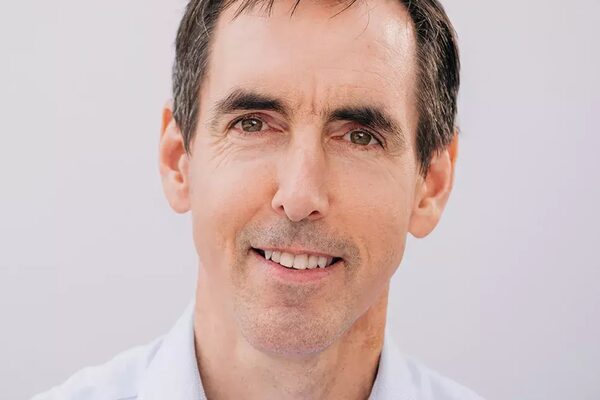
In shaping a career, few questions are as important as how to become more senior.
As companies develop talent, the question of how to help people become more senior over time, to the fullest of their potential, has great significance. Equally, ensuring that leaders have the underlying capacities required to navigate senior roles – and not simply a track record of success applying known playbooks on increasingly larger stages – can avoid the strategic risk created when executives get over their heads.
In most companies, these questions are hard to see in clear light because "becoming more senior" is, for all kinds of good reasons, mixed up with different questions like the size of the team one manages, the demonstration of prerequisites for a particular job, and the business's ability to afford a compensation package. At Incandescent, we have a people system in which there are no titles that denote level in the organization. Staffing to roles is separated from career progression, and compensation is a function of professional growth and performance, rather than of role. As a result, we're able to focus on the question of what it means to become more senior with a tightness and clarity that just wouldn't be possible in a different kind of people system. This post shares the way that we think about becoming more senior, not because we believe our people system would fit most other environments, but because its unusual nature helps us to isolate a variable of universal relevance.
We think of “becoming more senior” as having a set of core elements:
- Producing greater impact, not just as a matter of degree but as a difference in kind – producing impact in a different way that enables greater scale and scope
- Focusing on questions of greater consequence: higher stakes, longer time horizons, higher leverage, greater complexity/interdependence
- Taking a broader and longer perspective, in ways that engage fully and meaningfully with priorities for action
- Exercising greater leadership and influence, with or without formal authority – leadership that might take the form of setting strategic vision, making critical decisions, assembling coalitions, establishing a new creative direction, etc.
- Realizing greater value for an organization, and meriting higher compensation
While one may often see “more senior” through the lens of specific organizational contexts, what we really mean here is a set of qualities that are at least partly independent of a specific job in a specific organization. Being made head of a department or of a business creates a context in which an individual may have dramatically more opportunities to manifest these qualities, but it doesn’t create the underlying qualities. A person could easily be promoted into a role that requires them to engage with the world in a more senior way than they are capable of engaging. Similarly, a person can “be very senior” without being positioned in any organization at all – in fact, this is often core to how advisors operate.
As people “become more senior,” they progress through distinct modes of working akin to stages of development, as depicted in the visual below. As team members at Incandescent move from one mode of working to a more senior mode, they are able to create more value and have greater impact in their work of advising clients, supporting the ventures we invest in, and developing ideas and thought leadership.
- Accomplishing tasks, whether directly delegated or specified in a procedure
- Owning a role within the context of a project or a stream of work. In a strategy project, this could involve “owning the model” that quantifies the financial consequences of different strategic alternatives. In the context of an internal function like finance, this could look like orchestrating the monthly financial processes that in turn enable the broader work of shaping how the firm makes and spends money
- Shaping a whole stream of work toward a complex goal. Examples include leading a major project that resolves fundamental unknowns to achieve a new level of performance for a client; creating a new body of actionable knowledge for the firm about a given topic (e.g., a new methodology); and taking ownership of a core function of a growing company in a way that includes navigating all the interdependencies of how that function contributes to and is shaped by the company’s broader strategy
- Driving a complex constellation of streams to achieve larger goals over longer time horizons. This could take the form of advising a client about enterprise-level strategy or organization in contexts that require difficult integration of widely different domains; or conceptualizing and shaping a path toward a venture’s next era, figuring out what needs to be emphasized in what order in an environment of highly constrained resources
- Building a platform, in which many different opportunities and dimensions need to be woven together to grow a business and to shape and drive a body of work out in the world. This platform advances the firm’s vision through focus on a particular domain (e.g., a sector, a series of ventures in a given space, a big goal in the social sector enacted through many interdependent actors over a sustained period of time), and plays out through a range of opportunities that build on one another in an organic way, creating a sustained flywheel dynamic
- Building a whole system from vision, through development of the engine to achieve that vision, to navigation of the specific constraints of each era along the way to the realization of that vision. This whole system, like Incandescent as a firm over the long arc, is robust enough to include many valuable platforms that come together to form a coherent whole
- Shaping a “worldview” with impact at the ecosystem level, integrating multiple whole systems – bodies of thinking, business engines – into a coherent whole that not only creates great value but leads to dramatically greater impact through the spread and adaptation of ideas and practices far beyond the firm’s direct reach
Similar situations can be approached in different ways that correspond to these modes. For instance, consider a client’s need to run a workshop to improve senior team decision-making. This need could be approached primarily in a “mode 2” way: focusing on quality design of that event, e.g., assembling the firm’s best tools and perspectives, meeting the client’s specific design requirements, etc. The same workshop could be approached as part of a broader arc of moving the leadership team from a top-down way of working to a more balanced teaming approach (mode 3). Or that workshop could be navigated as part of a broader, longer-term, more holistic approach to reshaping the organization to execute a new strategy (mode 4). That workshop could even be a manifestation of a much larger effort to rethink how management teaming or strategy execution should work, with this client’s need part of a whole system of ideas and a business engine that changes how many, many companies operate along those dimensions (mode 5). (See chart below).
A client needs to run a workshop to improve the senior team’s decision making:
One important thing to note is that work at the higher modes isn’t generally “there to be done” – the conditions for doing that work need to be shaped, often over very long periods of time. Clients, for instance, mostly commission work from consultants framed in a way that corresponds to mode 3 (e.g., answer this bounded question) or at times mode 4 (e.g., shape and execute this large program, advise on this complex constellation of strategic questions). An advisor could operate in a mode 5 way, but to really do the work that way, he or she would need to fashion a very special kind of relationship with a chief executive, who in turn would need to drive a bold, significant platform-like vision with the advisor’s help (e.g., perhaps IDEO’s work building a shared innovation engine with Ford). This doesn’t “just happen” and can’t be “just sold.” While it’s possible that someone could build a company from the ground up in a way that feels like mode 3 – whether in a more structured “execute a plan” way or a more improvisational “build what’s on the critical path and learn what happens” way – a lot of luck would be required, as the complexity of the task generally requires an entrepreneur to operate in mode 4 or above. The entrepreneur can engage in a mode 4, 5 or 6 way – and the higher the mode, the more is required of the entrepreneur in terms of assembling the resources and capabilities, fitting external conditions, etc. to manifest the breadth and complexity of their vision in the world.
In theory, the career path in a consulting firm maps roughly to these modes. An associate does mode 2 work – researching, building models, running workstreams within the context of a broader project – and then advances to the point where, as an experienced project manager, she is operating mostly in mode 3. As an experienced principal and junior partner, this individual operates mainly in mode 4, working on shaping a client agenda in a large company that has whole portfolios of projects and advancing capabilities and methodologies that apply across portfolios of clients. As a more senior partner, she would operate significantly in mode 5, building a whole field of practice as a platform, whether in an industry space, a geography or a field of expertise – and weaving together networks, capabilities, proof points, value propositions, and so on to build a business that generates accelerating growth.
In practice, large consulting firms often aren’t like this, because they build assets that enable people to be promoted well above the mode at which they typically operate, with people able to “piggyback” on the firm’s processes, brand, knowledge and resources. For instance, someone drawing on the relationships, methodologies, organizational infrastructure and so on of a major strategy firm might well “build a business” in the way partners are expected to while operating largely in a mode 3 way, winning a series of engagements in a largely discrete way, rather than as a complex constellation managed in an integrated, dynamic way (mode 4). Similarly, in such a firm one could conduct a large, transformational client engagement in a mode 3 way, “filling out the pieces” of the different aspects of the work (e.g., perspective on the external environment, operational consequences, organizational change) in a way that treats these different domains as a kind of formula, rather than as a living, interdependent whole.
Similar observations could be made about career paths in industries like venture capital. In theory, associates might operate in mode 3 quarterbacking due diligence (with a few analysts operating in mode 2), or in mode 4 working with portfolio company management teams, with partners working in mode 5 building a platform in a given space, including building the relationships that generate the capital required to build the portfolio.
In practice, while there are certainly VC partners who engage with their work in this way – or like Fred Wilson or Peter Thiel, partners who stretch upward toward engaging with the world through a whole worldview of how to build companies – a greater number of venture partners likely engage in mode 4 ways to take advantage of particular trends they see in particular spaces. The development of standard approaches for how venture capital investments work and how venture-backed companies get built makes it easier for people with the right strengths to succeed in roles despite engaging in a “lower” mode than the work might otherwise require.
Engaging in a lower mode than the work might otherwise require isn’t necessarily bad. So long as what these individuals are drawing upon actually fit the needs of the situations they encounter, they may add value just as great as what someone operating in a more expansive way would create. When the “standard approaches” don’t fit the situations at hand, however, in strategy consulting, venture capital, or any other field, then this gap in how an individual engages can produce a kind of rote problem solving that misses the essence of the problem to be solved or opportunity to be addressed.
At Incandescent, the spectrum that is most relevant to how we think about development is the range from mode 2 through mode 5. Our work is sufficiently demanding, and benefits sufficiently from a big-picture view of context, that even the most junior work gets done by people who are well into engaging in a mode 2 way and stretching toward mode 3.
For our junior team, the question of how to develop from a “role” level at mode 2 (e.g., leveraging a senior person on a project) to a “shaping a whole stream” level at mode 3 is paramount. Part of what this involves is a broad kind of professional maturation – learning to engage with work in a broader, more complex way – and part of what it involves is building the firm-specific knowledge, general skills, domain expertise and relationships (e.g., trust with specific clients) necessary to bring one’s broad abilities to bear in a specific context. There is a back and forth between these distinct dimensions of learning. For instance, figuring out how to move into mode 3 requires developing the project management skills to be able to keep an effort on track in a shifting client environment; gaining an intuitive feel through experience for how different kinds of projects play out; mastering the deck-writing and presentation skills required to work towards and deliver on different kinds of milestones with clients; and so on. At the same time, as someone matures from engaging mostly in a mode 2 way to engaging mostly in a mode 3 way, this will “pull them upwards” on a range of skills at once, as their new larger context will draw their attention to different ways of engaging on the many elements that get drawn together into the overall fabric of their work.
As people progress into more senior roles, there are a parallel set of transitions from engaging in a mode 3 “shaping a stream” model to engaging in a mode 4 “complex constellation” model. This transition involves big shifts such as:
- Moving from a focus on a discrete project or process to a client or venture agenda that encompasses an evolving, dynamic set of issues
- Creating the context for others – clients and firm members – to lead whole streams of work, where the senior member of our team adds value in the more sponsor-like way of initiating and helping to steer versus the more owner-like way of driving the work
- Building a larger vector of opportunities, in which “live” work with clients/ventures is leveraged to develop capabilities and relationships that in turn feed into the development of new business, and both feed into and are enabled by the development of thought leadership
In the context of the consulting industry, it is natural to take the pivotal transition from an engagement manager to principal as consisting of moving from simply managing the work to creating new opportunities for the firm. Our view is that this transition is more of an outgrowth of a broader evolution in the way a team member works as she becomes more senior: the selling comes from a more advanced way of building relationships, navigating to the right problem, drawing on and positioning the firm, and so on. Of course a commercial win could happen with someone still operating in a mode 3 way – and someone operating in a more mode 4 way could have other challenges (e.g., specific skill gaps related to selling, lack of relevant relationships or expertise) that might get in the way of creating commercial opportunities – so we can’t use commercial success as a litmus test for development from one mode to another, although we can see how this developmental step helps a team member drive new business differently, more consistently and at larger scale.
There are particular skill development needs that are frequently important to moving from one mode of work to another at Incandescent. For instance, early in mode 3, skills related to structuring work and managing a project stand out as important. Later in mode 3, the focus shifts more to the dynamic interplay of managing the client, managing the project, managing the problem solving and managing the extended team (Incandescent team members, client team members, external collaborators, etc.). As one moves from mode 3 to mode 4, that dynamic interplay has become more fully internalized, and the focus shifts again, to how to use the mode 3 projects close at hand to build toward new mandates and larger goals. Unlike many firms, we don't use a competency model as a checklist for advancement. While it is useful to think about how people advance in distinct skill areas (e.g., problem solving, communication) as they move “rightwards” toward higher modes, we treat the level of work people can do in any given context as an empirical question, and very much support people “playing up” above the roles they typically would, when they’re able to do that in a particular context. We’re equally supportive of people playing less senior roles than they typically might when that’s valuable for them to do in a particular business context or as a way of filling in skills they haven’t previously developed.
As a partnership firm, we see the work of mode 5 – building platforms – as the core of what partners distinctively do, and we see the firm’s partners as contributing to the shared mode 6 work of building the firm as a coherent, distinctive, resonant whole. Ultimately, our aspiration is to reach toward the larger impact of mode 7 – to achieve an influence through our thinking far beyond our direct impact as a business, as for instance Peter Drucker did as an individual, or the leading strategy firms did with their development not just of their own discrete businesses, but of strategy as a field and a framework for leading companies. By creating so much white space and flexibility for different kinds of platforms and different business models, we aim to build an ecosystem of platforms that not only enable us to build an institution of lasting value, but over the very long term – the work of decades, not years – to build up towards this higher aspiration.



